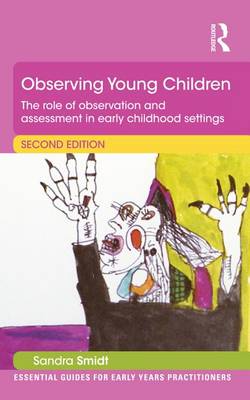Essential Guides for Early Years Practitioners
2 total works
Observing, Assessing and Planning for Children in the Early Years
by Sandra Smidt
Sandra Smidt uses case studies throughout to explain in detail how young children's development can be matched to their exact needs and interests, creating a more positive learning experience for all.
This fully revised second edition of Observing, Assessing and Planning for Children in the Early Years provides a detailed analysis of what is meant by the observation of young learners and why this is so vital to early years practitioners and students. In this accessible and insightful text, Sandra Smidt examines the various theories of how young children develop and learn, which have been put forward by thinkers and writers across time and place so the reader has a genuinely global view of early childhood. She then highlights how important it is for practitioners in schools, nurseries and settings to think carefully about what they have seen and heard in light of what they, as adults, already know about the children and their learning.
Also included in this text is a helpful 'Try Your Hand' section where readers are invited to make their own judgements about what they have read, as well as a section on observing and assessing not only the nursery-aged children but also babies and toddlers.

